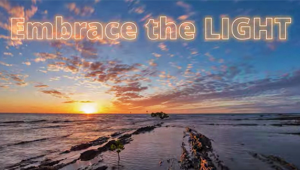Point & Shoot: Capturing Scenics with your Compact Camera
|
Perhaps one of the biggest misconceptions that people have about scenic photography is the notion that the beauty of a scene will automatically be captured by a camera—all you need to do is simply point and shoot at random. After all, spectacular mountains or azure seas are awe-inspiring to look at, so what could go wrong? Actually, a lot!
The truth is, the human eye is much more discriminating than your camera's viewfinder is. When we view a scene, we tend to eliminate any clutter or distractions from our mind's eye. On the other hand, film records whatever is in front of it—often with less than impressive results. On your next trip to a national park or other beautiful scenic area, adjust your zoom lens to a moderate telephoto setting (if your compact camera has one) and resist the temptation to cram everything into just one shot. If there's more than one striking point of interest than your photo can handle, then compose two or three pictures of that same scene. Use the wide-angle setting for a grand panoramic view, and then zoom in to isolate some interesting details. If your camera only has a built-in fixed-focal-length lens, getting closer to your subject is the only solution for making your subject more prominent in your pictures. In either case, you don't have to include every rock, tree, or bit of foliage in your picture. For example, shooting an image of one solitary tree on a hill can often be more interesting than photographing the entire forest behind it. Get even closer and isolate one tree branch against a blue sky for a really simple, striking statement. Remember that every good photo has a subject, or center of interest. If that subject is unclear to people who look at your picture, the image will lack impact. The exception to this rule is when you photograph patterns or abstracts, such as a field of flowers, an arrangement of colorful rocks, or even animal tracks in the snow. Leading lines in the foreground of your picture can add drama, as well as lead your viewer's eye to the subject. This can be accomplished with a fence leading to a farmhouse, a road weaving through a rocky canyon, or railroad tracks through mountainous scenery. As for film choices, ISO 100 is often the best choice for fine grain and sharper colors when doing scenic photography. If you're shooting moving subjects within the scene, or when photographing at twilight or in other dimly lit conditions, you may want to consider a faster film (ISO 200 and above). Most people with point-and-shoot cameras tend to shoot pictures in a horizontal format, perhaps because the camera seems easier to handle this way. However, some scenic subjects lend themselves better to a vertical composition, such as a mountain peak or towering waterfall. Other subjects—like a panoramic shoreline—are better photographed from a horizontal angle. Some subjects lend themselves well to both formats. Even if you're certain that a subject will make a better horizontal, turn the camera the other way and take a look through the viewfinder. Don't be afraid to break the rules. In fact, Some subjects will look interesting if you photograph them while holding your camera at an angle, positioned between vertical and horizontal. A lot of people are inspired to take pictures outdoors only when there's a lot of light. But whenever possible, try to reserve your photography for the morning or afternoon, when the quality of light is better. During the middle of the day, the harsh sun can wash out colors and make distant views appear hazy. The "color" of the light is warmer early and late, and shadows are often more dramatic. You'll increase your chances of getting beautiful scenic images when the light is wonderful, no matter how basic your point-and-shoot camera is. |




















































